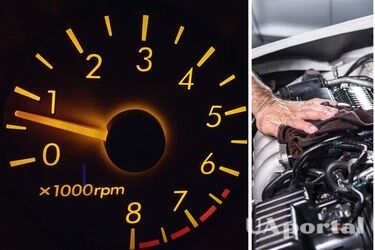How low revs "kill" your car engine: tips for drivers

Many inexperienced drivers often have the question of what engine speed to maintain while driving. "Old school" drivers are used to driving at low revs and teach this to beginners. On the one hand, it allows to reduce fuel consumption and noise in the cabin from the engine, but this recommendation is not very useful for the engine.
Read also: Top 5 most common drivers mistakes leading to accidents while overtaking
The uamotors portal writes that low revs are no more than 2,500 rpm/minute for petrol engines and 1,200 rpm/minute for diesel engines. It does help to save money because the lower the engine RPM, the lower the fuel consumption will be, but this correlation does not always work.
In addition, low-speed driving has the following consequences:
- It can create an emergency when it becomes necessary to accelerate. If you drive in a higher gear, then if necessary, it will take more time to accelerate sharply unless the driver reduces the transmission in advance;
- The intensity of the oil pump in some engines directly depends on crankshaft revolutions. Accordingly, the engine does not receive enough lubrication at too low revs, which accelerates the wear of its internal parts;
- The engine starts to vibrate at low revs. Increased vibration stress on parts may result in the need for repairs due to destructive vibrations. Also, the engine generates an increased amount of residue at low revs, which can also send your car to the service.
Recall that earlier, we revealed why experienced drivers advise pushing the gas pedal to the floor. Such action should be carried out from time to time.
If you want to receive the latest news about the war and events in Ukraine, subscribe to our Telegram channel!
